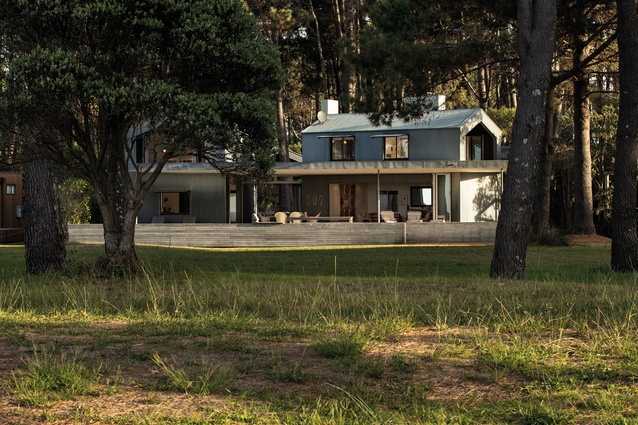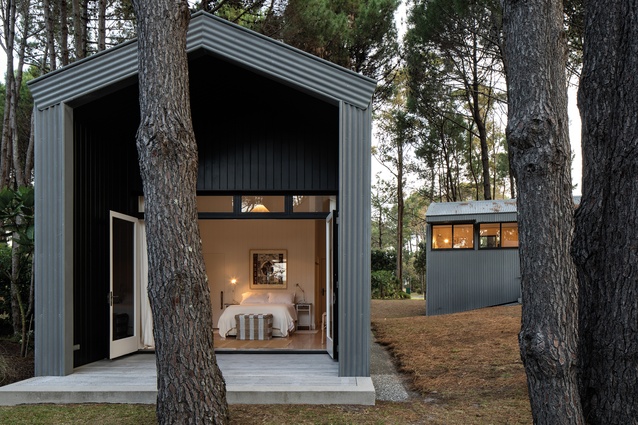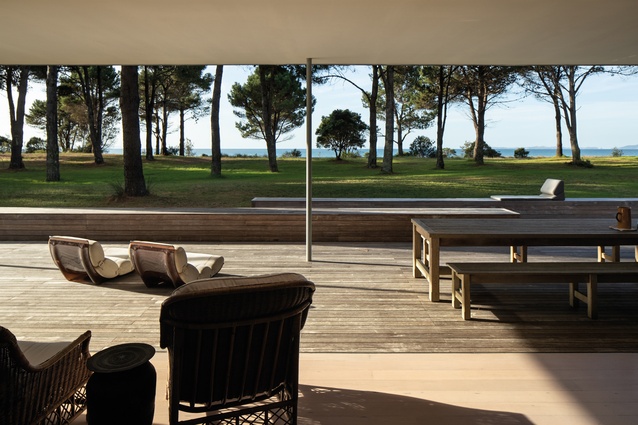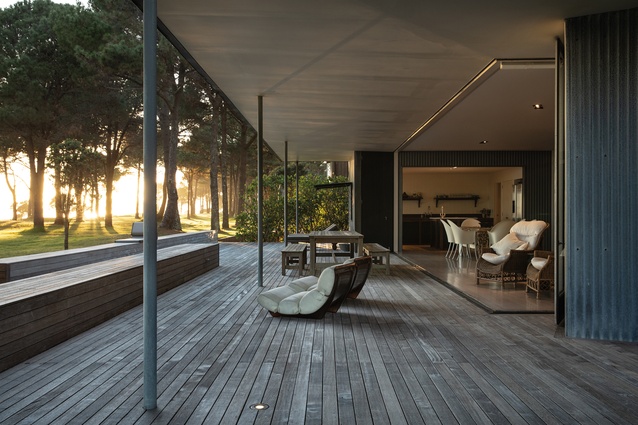Multigenerational bach: The Pines
In this excerpt from Andrew Patterson’s new book, Patterson: Houses of Aotearoa, we celebrate one of his beautiful beachside baches, The Pines.
The coastline of New Zealand is a crown studded with jewels and everyone has their personal favourite.
All around the coast are communities of the summer houses known locally as baches. Some of these have simply sprouted from campsites and become groups of tiny ramshackle cottages huddled together. Baches can stay in families for generations. They are often erected quickly and intended only as temporary structures but then added to over the years. They are character-rich and crammed with memorabilia.
The bach is a tool for keeping families together, as succeeding generations spend their summer days fishing, cooking and playing cricket or touch rugby on the beach. These buildings are base camps from which the environment can be explored and enjoyed. In common, they have the need to provide shelter in onshore and offshore winds, the need to be as maintenance-free as possible, and the need to be able to draw all sorts of different family life stages together at once.
Children and teenagers can roam freely, never far from the sight of neighbouring friends, while adults can mix without the need to drive, all in a relaxed Arcadian environment where the door of every house is always open.
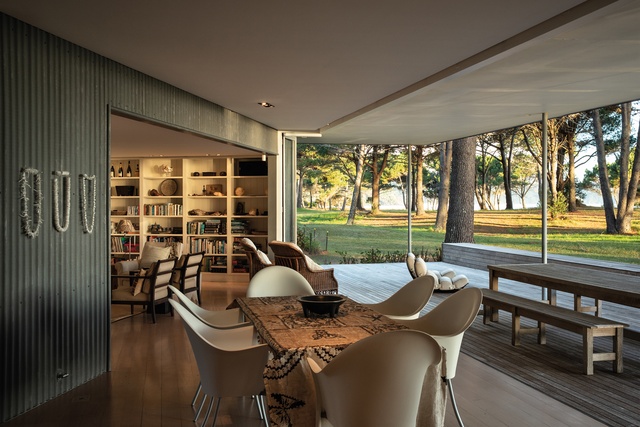
This particular bach is located on land previously used as a pine plantation, fronting a white-sand surf beach called Matarangi. The remaining pines give a violet, dappled light.
It consists of a main house, a sleep-out that acts as an outdoor entry lobby, and a boatshed with a two-bedroomed guest cottage above. The main house can be completely opened up along the front to a common reserve over a sociable, inviting deck. Its form is organised into two corrugated-zinc-clad volumes connected by a living space. The zinc cladding carries through to the interior, giving the effect that perhaps these were two separate, romantic structures joined later to become one.
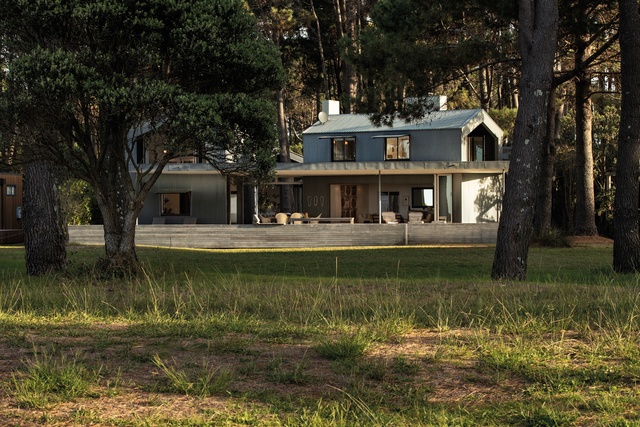
Communal space continues to the protected courtyard area at the back, with its external stone fireplace. This is the lee side of the building, through which the other buildings are accessed. Everything is positioned to afford glimpses of the ocean; every room has a different quality and relationship with the rest of the building. There is no front door.
The zinc ages gracefully so never needs to be painted. Inside, the walls are lined in painted larch and covered in local artwork, while furniture cast-offs litter the floor. Shutters on hydraulic stays close down windows, offering protection from the salt spray blown in from the beach out front. There are no downpipes, for they would only be blocked by pine needles. The bach remains constant from one summer to the next, waiting out the cooler months knowing that, soon, it will occupy its place at the centre of the family again.
This is an excerpt from the new book Patterson: Houses of Aotearoa; read a review of the book here.
This article first appeared in Houses magazine.




